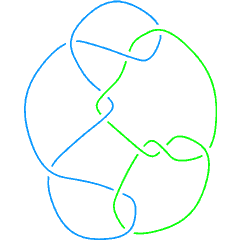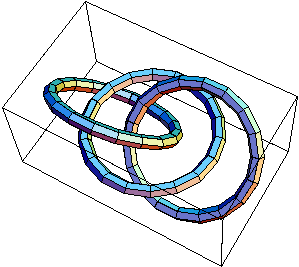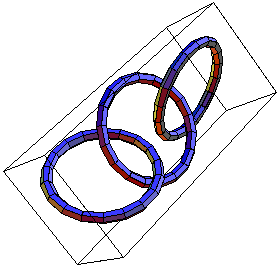
Add your name / see who's in!
|
| #
|
Week of...
|
Links
|
| Fall Semester
|
| 1
|
Sep 10
|
About, Tue, Thu
|
| 2
|
Sep 17
|
Tue, HW1, Thu
|
| 3
|
Sep 24
|
Tue, Photo, Thu
|
| 4
|
Oct 1
|
Questionnaire, Tue, HW2, Thu
|
| 5
|
Oct 8
|
Thanksgiving, Tue, Thu
|
| 6
|
Oct 15
|
Tue, HW3, Thu
|
| 7
|
Oct 22
|
Tue, Thu
|
| 8
|
Oct 29
|
Tue, HW4, Thu, Hilbert sphere
|
| 9
|
Nov 5
|
Tue,Thu, TE1
|
| 10
|
Nov 12
|
Tue, Thu
|
| 11
|
Nov 19
|
Tue, Thu, HW5
|
| 12
|
Nov 26
|
Tue, Thu
|
| 13
|
Dec 3
|
Tue, Thu, HW6
|
| Spring Semester
|
| 14
|
Jan 7
|
Tue, Thu, HW7
|
| 15
|
Jan 14
|
Tue, Thu
|
| 16
|
Jan 21
|
Tue, Thu, HW8
|
| 17
|
Jan 28
|
Tue, Thu
|
| 18
|
Feb 4
|
Tue
|
| 19
|
Feb 11
|
TE2, Tue, HW9, Thu, Feb 17: last chance to drop class
|
| R
|
Feb 18
|
Reading week
|
| 20
|
Feb 25
|
Tue, Thu, HW10
|
| 21
|
Mar 3
|
Tue, Thu
|
| 22
|
Mar 10
|
Tue, Thu, HW11
|
| 23
|
Mar 17
|
Tue, Thu
|
| 24
|
Mar 24
|
Tue, HW12, Thu
|
| 25
|
Mar 31
|
Referendum,Tue, Thu
|
| 26
|
Apr 7
|
Tue, Thu
|
| R
|
Apr 14
|
Office hours
|
| R
|
Apr 21
|
Office hours
|
| F
|
Apr 28
|
Office hours, Final (Fri, May 2)
|
| Register of Good Deeds
|
| Errata to Bredon's Book
|
|
Announcements go here
Reading
At your leisure, read your class notes over the break, and especially at some point right before classes resume next semester. Here are a few questions you can ask yourself while reading:
- Do you understand pullbacks of differential forms?
- Do you think you could in practice integrate any differential form on any manifold (at least when the formulas involved are not too messy)?
- Do you understand orientations and boundaries and how they interact?
- Why is Stokes' theorem true? Both in terms of the local meaning of
 , and in terms of a formal proof.
, and in terms of a formal proof.
- Do you understand the two and three dimensional cases of Stokes' theorem?
- Do you understand the Hodge star operator
 ?
?
- How did we get
 from the least action principle?
from the least action principle?
- Do you understand how Poincare's lemma entered the derivation of Maxewell's equations?
- Do you understand the operator
 ? (How was it used, formally derived, and what is the intuitive picture behind it?)
? (How was it used, formally derived, and what is the intuitive picture behind it?)
- What was
 and how did it relate to pullbacks and homotopy.
and how did it relate to pullbacks and homotopy.
Doing
Solve the following problems and submit your solutions of problems 2, 3 and 4. This is a very challenging collection of problems; I expect most of you to do problem 1 with no difficulty (it is a repeat of an older problem), problem 2 with some effort, and I hope each of you will be able to do at least one further problem. It will be great if some of you will do all problems!
Problem 1. The standard volume form on  is the form
is the form  given by
given by  . Show that
. Show that  .
.
Problem 2. If  is a compact orientable
is a compact orientable  -manifold with no boundary, show that
-manifold with no boundary, show that  .
.
Problem 3. Show that if  satisfies
satisfies  , then
, then  is exact. Deduce that if
is exact. Deduce that if  and
and  satisfy
satisfy  , then
, then ![{\displaystyle [\omega _{1}]=[\omega _{2}]}](https://wikimedia.org/api/rest_v1/media/math/render/svg/6a072623e3514df1499ca42d8c579fc667748e42) as elements of
as elements of  . Deduce further that
. Deduce further that  .
.
Problem 4. A "link" in  is an ordered pair
is an ordered pair  , in which
, in which  and
and  are smooth embeddings of the circle
are smooth embeddings of the circle  into
into  , whose images (called "the components of
, whose images (called "the components of  ") are disjoint. Two such links are called "isotopic", if one can be deformed to the other via a smooth homotopy along which the components remain embeddings and remain disjoint. Given a link
") are disjoint. Two such links are called "isotopic", if one can be deformed to the other via a smooth homotopy along which the components remain embeddings and remain disjoint. Given a link  , define a map
, define a map  by
by  . Finally, let
. Finally, let  be the standard volume form of
be the standard volume form of  , and define "the linking number of
, and define "the linking number of  " to be
" to be  . Show
. Show
- If two links
 and
and  are isotopic, then their linking numbers are the same:
are isotopic, then their linking numbers are the same:  .
.
- If
 is a second 2-form on
is a second 2-form on  for which
for which  and if
and if  is defined in the same manner as
is defined in the same manner as  except replacing
except replacing  with
with  , then
, then  . (In particular this is true if
. (In particular this is true if  is very close to a
is very close to a  -function form at the north pole of
-function form at the north pole of  ).
).
- Compute (but just up to an overall sign) the linking number of the link L11a193, displayed below:

|

|

|
The links L11a193,  and and  . .
|
Just for Fun
Prove that the two (3-component) links  and
and  shown above are not isotopic, yet their complements are diffeomorphic. (See more at Classes: 2004-05: Math 1300Y - Topology: Homework Assignment 5)
shown above are not isotopic, yet their complements are diffeomorphic. (See more at Classes: 2004-05: Math 1300Y - Topology: Homework Assignment 5)
Here is one idea. Don't look at it before thinking the problem for a while.
Due Date
This assignment is due in class on Thursday January 10, 2007.





















![{\displaystyle [\omega _{1}]=[\omega _{2}]}](https://wikimedia.org/api/rest_v1/media/math/render/svg/6a072623e3514df1499ca42d8c579fc667748e42)




















